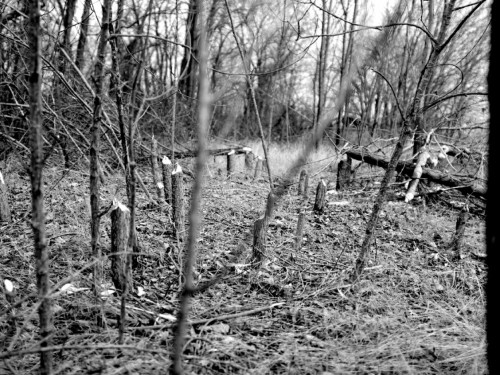County News
Dam beavers

 A little Canadian icon is a big headache at the Wellington beach
A little Canadian icon is a big headache at the Wellington beach
Vandals at the Wellington beach may be facing the death sentence for their crimes.
Three weeks ago, Parks and Arenas Manager Andrew Morton got a call from a resident, concerned about some damage a beaver had caused to the trees at the Wellington beach.
Morton went to the site of the beavers’ dam, but he failed to see anything unusual. He forgot about it, until he received a second phone call the next day, telling him 20 more trees had been toppled.
On Morton’s second trip, he discovered what the resident had seen. A patch of poplar trees growing on one of the beach’s sand dunes had been ferociously attacked. Morton found that 74 trees had been toppled—all by rogue beavers who were turning Wellington’s forested beach into a winter smorgasbord. A count last Friday saw the number rise to 83.
The beaver, which lives in a dam at the west end of the Wellington harbour, had developed a taste for the young poplars that grow alongside the boardwalk put in by the Wellington Rotary Club. It has been harvesting the youngest shoots to keep around its dam, under the ice, for food during its hibernation.
Poplars themselves grow in abundance, and neither the tree nor the animal is an endangered species. But Morton’s concern is that as the beaver removes the trees, it will put the dune they grow on in jeopardy of erosion. It would also interfere with the County’s obligation to maintain the area.
“This is a part of the beach and this is the service that I’m supposed to be offering here, is a forested beach,” said Morton.
“When they start interfering with our interests, that’s when people start to think, yeah, we have to do something about this,” said Quinte Conservation naturalist Terry Sprague. “And they’re not wrong in thinking that.”
Morton called up the Ministry of Natural Resources to find out how to proceed. At first the provincial agency, which owns the land, told Morton to let the animals be. They suggested that the trees be meshed with a fine chicken wire, to stop the beaver chewing on them. But Morton pointed out that the painstaking task of meshing hundreds of trees might just tempt the beavers to cross the road and vandalize trees on private property.
When he explained his concerns they agreed to allow the County, which manages the beach for the MNR, to contract a trapper. They gave no direction, however, about whether to livetrap and relocate the beavers, or just to kill them. The trapper Morton hired, who is based in Picton, didn’t enlighten him on the issue.
Sprague says that while relocation might seem like the humane thing to do, a territorial animal like a beaver, displaced into a habitat that may already be home to another of its species, could end in a fight to the death.
“It’s a kind of a sensitive issue, really, what to do in cases like this. I am always of the belief that you leave nature alone. However, when you get to the point that beaver is doing some damage in a park where every tree is important, you have to take measures to remove it,” Sprague said.
And whether the beavers are killed or relocated, Sprague pointed out, a new family will likely fill the void. “You’re damned if you do, and damned if you don’t.”

Comments (0)